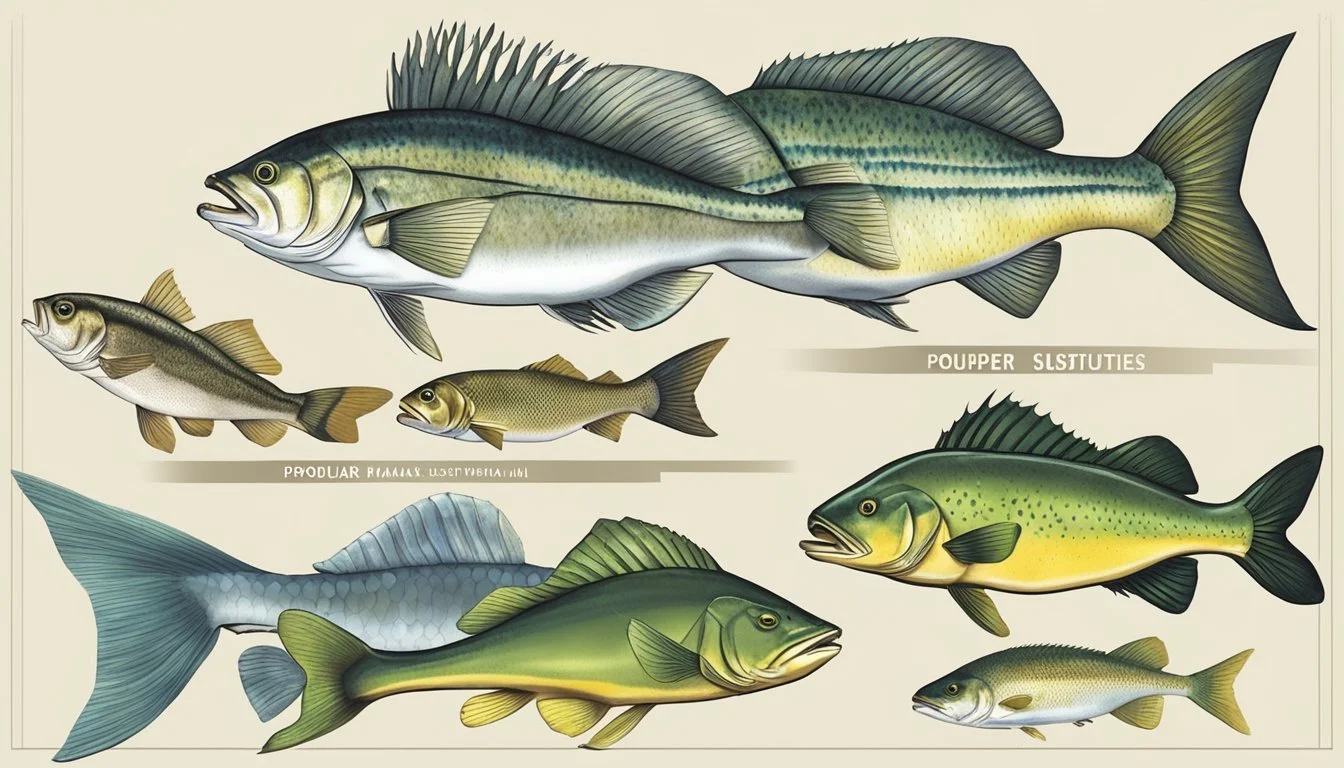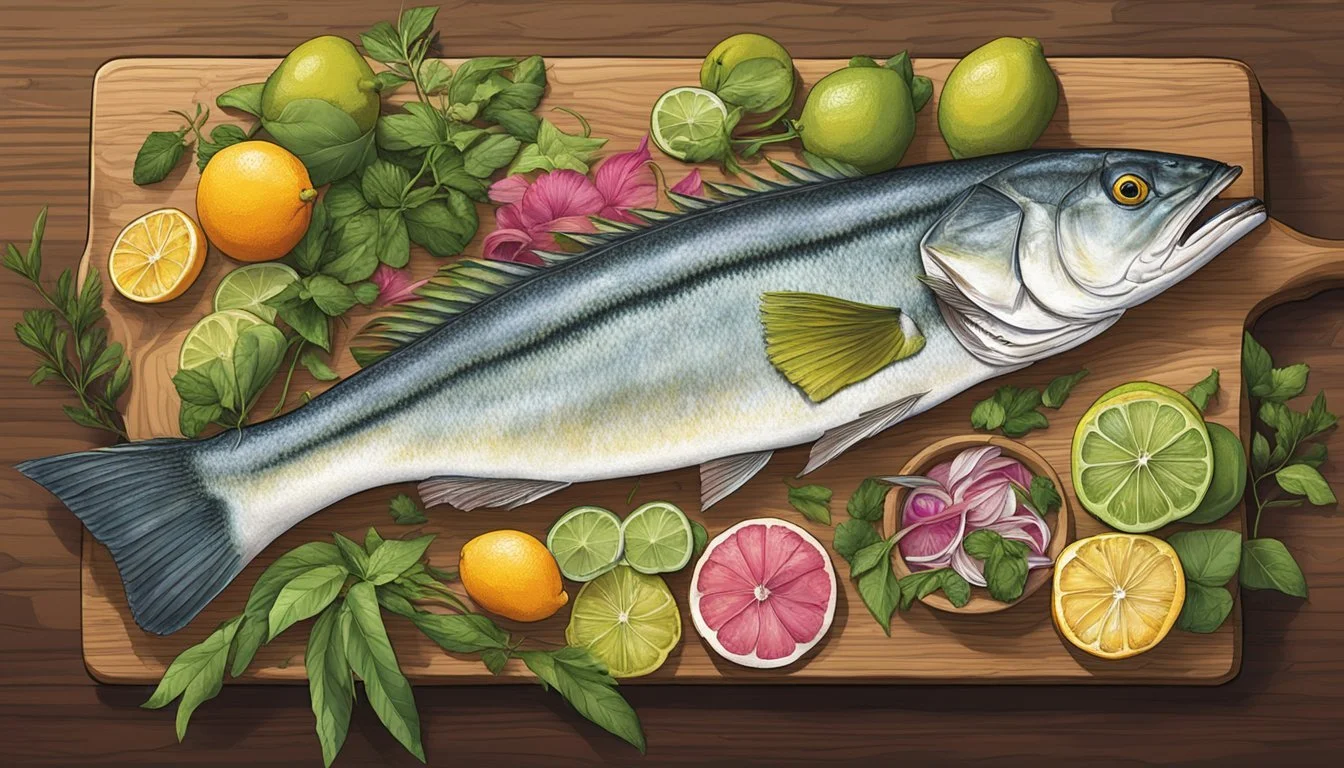Snapper Substitutes
The Best Alternatives for Your Recipes
For anyone who enjoys seafood dishes, snapper, especially red snapper, is a delightful fish known for its mild, sweet flavor and firm texture. When red snapper is unavailable, there are several excellent substitutes that can replicate its unique taste and feel. This guide will explore alternatives like grouper, sea bass, tilapia, and cod, providing you with versatile options for any recipe.
One of the best substitutes for red snapper is grouper. This popular fish mirrors the mild, slightly sweet flavor of snapper and can be found in most seafood markets. If you’re after a similar firmness and texture, sea bass and mahi-mahi also make great choices. These options ensure your seafood dishes remain vibrant and flavorful, even without the original ingredient.
For those wanting more accessible or budget-friendly options, tilapia and catfish provide a comparable taste and texture. Though they might have slight differences in flavor, these alternatives can still deliver a satisfying meal. Whether you're preparing a casual dinner or an elegant seafood feast, these substitutes ensure you won't miss out on the delightful experience red snapper offers.
Understanding Snapper
Snapper, particularly the red snapper, is a prized saltwater fish known for its mild flavor, firm texture, and versatility in the kitchen. Its quality is often influenced by the ocean environment and handling practices.
Flavor Characteristics
Snapper is celebrated for its mild and slightly sweet taste, making it a favorite among seafood enthusiasts. Red snapper, in particular, is appreciated for its distinctive flavor that is not overwhelmingly fishy.
Its mildness allows it to pair well with a variety of seasonings and sauces, enhancing yet not overpowering the fish’s natural taste. The aroma of fresh snapper should be clean and oceanic, indicative of its high quality. Poor quality snapper, in contrast, often has a stronger, more unpleasant fishy smell.
Texture and Nutrition
The texture of snapper is firm and lean, making it adaptable to different cooking methods such as grilling, baking, and frying. Red snapper fillets hold together well, preventing flaking apart during cooking.
Nutritionally, snapper is a good source of lean protein, essential fatty acids, and various vitamins and minerals. For example:
Protein: Approximately 20 grams per 3-ounce serving
Omega-3 Fatty Acids: Beneficial for heart health
Vitamin B12 and Selenium: Essential for metabolism and immune function
Culinary Uses
Snapper's firm texture and mild flavor make it highly versatile in the kitchen. It can be prepared with various cooking techniques, catering to diverse culinary preferences.
Popular dishes include:
Grilled Snapper: Enhanced with herbs and spices for a smoky taste
Baked Snapper with Citrus: Complemented by lemon, lime, or orange for a refreshing flavor
Fish Tacos: Utilizing snapper’s mild taste as a base and enriched with vibrant toppings
These qualities—firmness, mildness, and adaptability—make snapper an excellent choice for chefs and home cooks aiming to produce delicious seafood dishes. The texture allows it to absorb marinades well, while its natural flavor pairs beautifully with a wide range of ingredients.
Popular Substitutes for Snapper
When red snapper is unavailable, several fish can serve as excellent substitutes due to similar texture and flavor profiles. Considering sustainability and availability, substitutes include sea bass, cod, and lesser-known alternatives such as grouper, tilapia, and catfish.
Sea Bass
Sea bass is a favored substitute for snapper due to its mild, delicate flavor and firm texture. It can be grilled, baked, or sautéed, making it a versatile choice for a range of recipes. Mild flavor allows it to absorb seasonings well, making it a good match for dishes that typically use snapper.
In terms of sustainability, many types of sea bass are farm-raised, helping to alleviate overfishing concerns. Due to its popularity, sea bass is usually available year-round, making it a reliable snapper alternative.
Cod
Cod is another excellent substitute for red snapper. It has a mild flavor and flaky texture, which can mimic the qualities of snapper in most recipes. Cod can be baked, broiled, or fried, fitting seamlessly into various culinary applications.
Sustainability is a significant factor here; wild-caught cod from well-managed fisheries is generally considered a sustainable choice. Availability varies by region, but cod is typically found in most supermarkets and fish markets.
Lesser-Known Alternatives
Several lesser-known fish also make suitable substitutes for snapper. Grouper offers a mild flavor and firm texture similar to snapper, making it a good option for grilling or baking. Tilapia is another versatile substitute with a light, mild taste, often farm-raised for sustainability.
Catfish and haddock are also worth considering. Catfish has a slightly stronger flavor but works well in fried or cooked preparations. Haddock, with its white, flaky meat, is suitable for various recipes, though it tends to be milder than snapper.
Using these lesser-known alternatives helps broaden culinary options while addressing sustainability concerns. By choosing farm-raised or sustainably caught fish, consumers can enjoy their favorite dishes responsibly.
Factors When Choosing Substitutes
When selecting a snapper substitute, consider culinary objectives, sustainability, and any dietary restrictions. Each factor plays a crucial role in creating a delicious and conscientious meal.
Culinary Goals
The primary goal in any dish is to achieve the desired texture and flavor. Snapper has a firm, flaky texture, and a mild, slightly sweet flavor. Alternatives like grouper, tilapia, and halibut provide similar profiles. Keep in mind the specific cooking technique; baking, grilling, or sautéing may influence the final dish.
Rockfish and mahi-mahi are excellent choices for hearty dishes. For tropical recipes, tuna steak can be a robust substitute. Adjust cooking times to prevent overcooking, especially for thinner fillets like tilapia.
Sustainability and Availability
Choosing a sustainable substitute supports healthy ecosystems. Snapper from regions like the Gulf of Mexico often face high demand, leading to overfishing. Alternatives like tilapia and grouper are often more sustainable choices.
Check for fish certified by the Marine Stewardship Council (MSC) or similar organizations. Freshwater fish like catfish can also be more readily available and sustainable. Local markets may offer region-specific options from the Atlantic, Pacific, or Gulf.
Dietary Concerns
Consider any dietary restrictions or preferences. Some individuals may need to avoid certain fish due to allergens or mercury levels. Tilapia is often lower in mercury compared to other options.
For a healthier choice, consider fish high in omega-3 fatty acids like mackerel or salmon. Ensure that the substitute aligns with dietary needs without compromising on flavor or texture. Always verify sourcing to avoid fish with harmful additives or poor quality.
By focusing on these factors, you can find the ideal snapper substitute that meets your culinary and ethical requirements.
Cooking Methods for Snapper Alternatives
Choosing the right cooking method is essential when working with snapper substitutes like tilapia, sea bass, grouper, and halibut. Each method can enhance the distinct flavors and textures of these fish, ensuring a delicious and satisfying meal.
Grilling and Broiling
Grilling and broiling are ideal for snapper alternatives due to their firm textures. For instance, grouper and halibut can hold up well on the grill, providing a smoky flavor that complements their mild sweetness. Lightly oil the fish and season it with salt, pepper, and herbs.
Tilapia can also be grilled but requires careful handling to prevent it from falling apart. Broiling works best for sea bass, which offers a buttery richness. Arrange the fish on a broiling pan, brush it with a marinade or olive oil, and cook under high heat until it's lightly browned and fully cooked.
Baking and Steaming
Baking and steaming are versatile techniques perfect for delicate fish like tilapia and sea bass. Baking is best for maintaining moisture. Place the fish in a baking dish, season with herbs, and add a splash of white wine or broth. Bake at 350°F until the flesh is opaque and flakes easily.
Steaming preserves the mild flavors and tender texture of fish like grouper and halibut. Use a steaming basket or wrap the fish in parchment paper with lemon slices and fresh dill. Steam until the fish is just done. This method highlights the fish's natural taste without adding extra fat.
Seasoning and Marinades for White Fish
Seasoning and marinades can greatly enhance the flavor of white fish, creating a delicious meal with minimal effort. The right combination of herbs and spices, along with adequate marinating, can turn a simple dish into a flavorful masterpiece.
Herb and Spice Options
White fish pairs well with a variety of herbs and spices. Parsley, basil, cilantro, garlic, dill, and thyme are excellent choices. These herbs can be used fresh or dried, depending on availability and preference.
For a touch of heat, consider adding paprika, cayenne, or red pepper flakes. These spices not only add flavor but also bring a little kick to the dish. Lemon juice and balsamic vinegar contribute acidity, enhancing the fish's natural flavors. Combining these with olive oil ensures the seasoning adheres well to the fish.
Marinating for Flavor
Marinating white fish is a straightforward process that imparts deep flavor. A simple marinade could include lemon juice, olive oil, garlic, and a sprinkle of the chosen herbs and spices. Mix these ingredients and coat the fish thoroughly.
Allow the fish to marinate for at least 15 minutes, but no longer than 30 minutes, to avoid overpowering the delicate fish with strong flavors. For best results, bake or grill the marinated fish until it flakes easily with a fork, showing it’s cooked to perfection.
Health Considerations of Snapper and Its Substitutes
Snapper and its substitutes offer various health benefits due to their rich nutrient profiles. Key considerations include their content of omega-3 fatty acids, protein levels, and low-fat nature.
Nutritional Value
Snapper is known for its high omega-3 fatty acids content, which supports heart health and reduces inflammation. These fatty acids also improve cognitive function. A typical 100g serving of snapper contains approximately 23g of protein, making it a substantial source of this essential nutrient.
Substitute fish like grouper and haddock offer similar health benefits. Grouper provides firm texture and mild taste, with about 20g of protein per 100g. Haddock is low in calories and rich in minerals like selenium and magnesium, which aid in overall body function.
Tilapia, another excellent substitute, is low-fat and versatile in cooking. It contains essential nutrients and meets dietary needs without excessive cost. The inclusion of these alternatives ensures both variety and nutritional adequacy in meals.
Where to Buy Fish Substitutes
Finding substitute fishes for snapper can be a seamless process with options ranging from local markets to specialty online retailers. Each option offers unique benefits depending on what you value most, be it sustainability, freshness, or cost.
Local and Seasonal Selections
Local grocery stores and fish markets are convenient places to find fresh snapper substitutes. Major grocery chains often stock tilapia, sea bass, and other white fishes. These stores provide the assurance of inspecting the fish for quality and freshness before purchase.
Local markets also cater to seasonal selections, meaning consumers can often find freshly caught fish that support local fisheries. Purchasing from local sources can sometimes be more sustainable since it reduces the need for long-distance transportation, lowering the carbon footprint.
For those prioritizing sustainability, asking the market staff about the origin and type of the fish, like wild-caught versus farm-raised, can be informative. These inquiries can aid in selecting options that are both budget-friendly and environmentally responsible.
Online and Specialty Markets
Online and specialty markets offer a wider range of snapper substitutes, especially for those searching for less commonly found species like barramundi or grouper. Websites dedicated to seafood often provide detailed information on the fish's source, whether it's wild-caught or farm-raised, and the environmental impact.
Specialty stores sometimes carry exotic options and cater to those looking for premium quality. Although these options might be more expensive, they offer variety and the convenience of home delivery. Online markets can also help meet the demand for specific fishes when local stores run out, ensuring a continuous supply.
Highly reputable online marketplaces often offer subscription services, ensuring regular delivery of fresh fish straight to your door while maintaining a diverse and high-quality protein source. It's essential to check reviews and sustainability certifications to ensure ethical practices and quality.
Creative Recipes Using Snapper Alternatives
Using substitutes for snapper can open up a world of culinary possibilities. Whether it's for fish and chips or curries, these alternatives can provide unique flavors and textures that highlight the versatility of seafood.
Fusion Cuisine Inspirations
Sea Bass Fish Tacos: Sea bass makes an excellent substitute for snapper due to its delicate texture and flavor. Create mouthwatering fish tacos by marinating sea bass in a mix of lime juice, garlic, and cumin, then grilling until flaky. Serve with a tangy slaw, avocado slices, and a drizzle of spicy mayo in warm tortillas.
Tilapia Curry: Tilapia is a mild-flavored fish with lighter flakes, perfect for absorbing the rich spices of curry. Cook tilapia fillets in a fragrant sauce made with ginger, garlic, turmeric, and coconut milk. Serve over jasmine rice for a satisfying and aromatic meal.
Rockfish Fish and Chips: Rockfish boasts a hearty texture, making it ideal for traditional fish and chips. The fish can be battered and fried until crispy, then paired with golden fries and tartar sauce. Add a side of mushy peas for a British classic.
Mahi-Mahi with Ginger Glaze: Mahi-Mahi's firmness and mild taste lend well to bold flavors. Marinate the fish in a mixture of soy sauce, honey, and fresh ginger, then sear or grill until perfectly cooked. Serve with steamed vegetables and jasmine rice for a delightful balance of flavors.
These recipes showcase the adaptability of various snapper substitutes, providing delicious alternatives that maintain the desired textures and flavors in diverse dishes.










